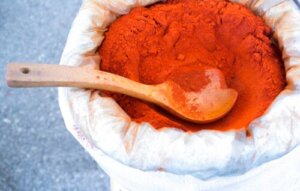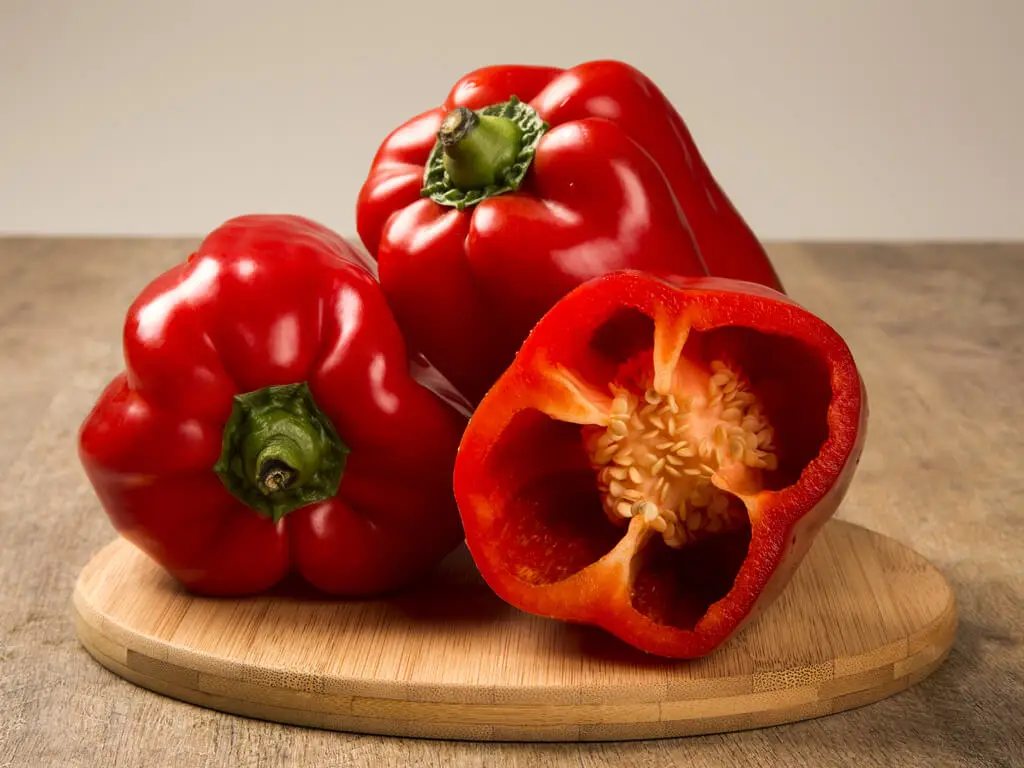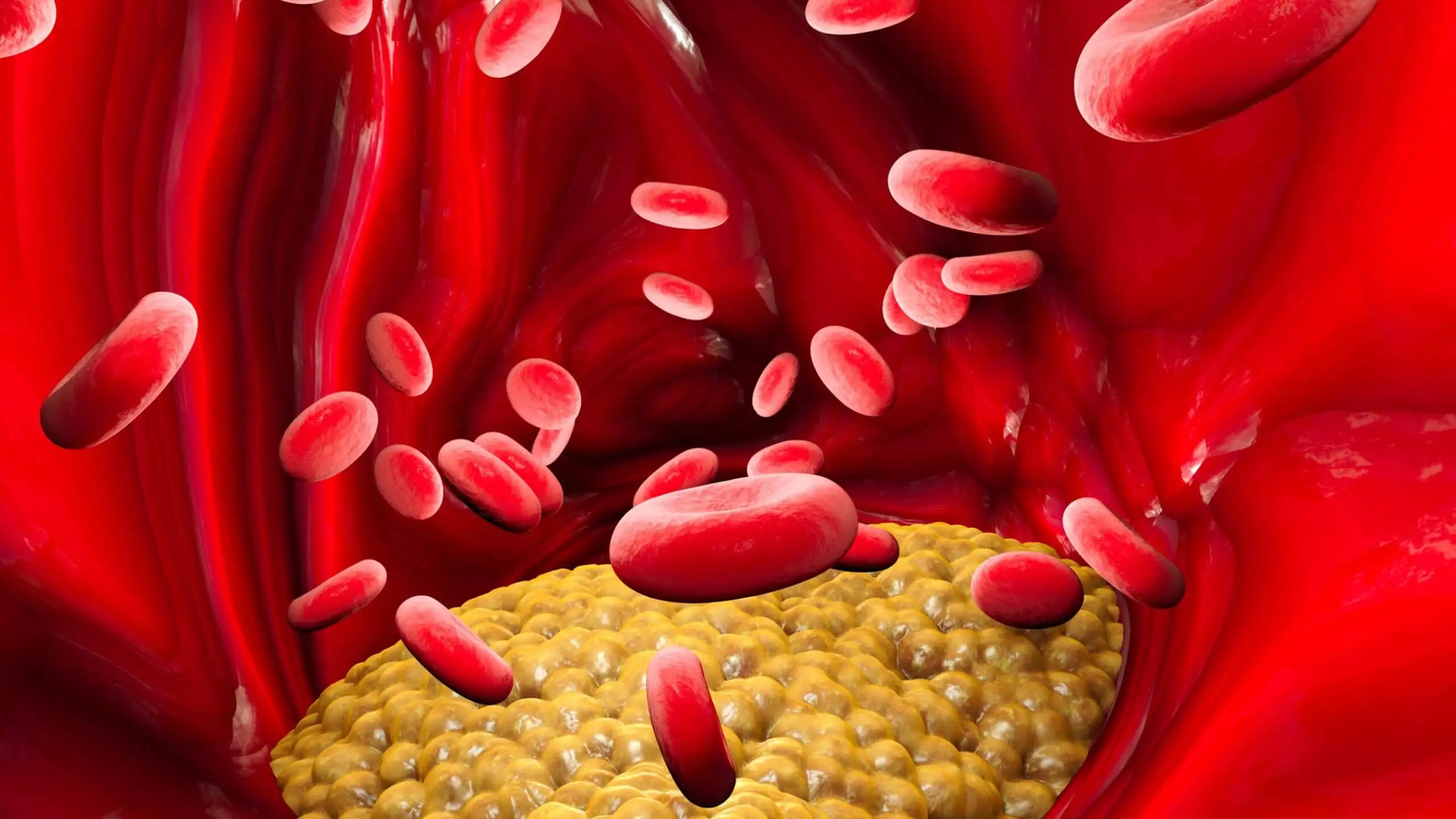Pimentón de la Vera or Paprika: What Are its Benefits and Uses?


Written and verified by the nutritionist Maria Patricia Pinero Corredor
Pimentón de la Vera or paprika is one of the culinary ingredients that has crossed borders since its origin to become the main base of Asian, Mediterranean, and Latin American cuisine. In addition to providing a pleasant flavor and color to a variety of dishes, it’s also known for its medicinal properties, which are based on its antioxidant effect.
But what exactly is paprika or pimentón de la Vera? What are its benefits? We’ll answer these questions in this article.
What is Pimentón de la Vera or paprika?
Paprika is the powdered product obtained after grinding a red bell pepper that’s ripe, healthy, and previously dehydrated. The fruit crop comes from an angiosperm plant of the Solanaceae family of the genus Capsicum. It’s also known as paprika.
Its history goes back more than 12,000 years, being cultivated by indigenous people in prehistoric times. It’s native to South America and, from there, was brought by Christopher Columbus to Spain.
It was the Spanish and Portuguese who labeled it with the name bell pepper. The best-known varities in Spain are those of La Vera (in Cáceres) and Murcia. Once in Europe, the culinary customs advanced and transformed the flavor and aroma of their preparations, replacing the most used condiment at that time, which was the black pepper.
The fruit of the paprika pepper is a berry with a great variety of species, which have a very thin skin, a little thick pulp, and many seeds inside. These are 5 of the most common varieties:
- Capsicum chinense
- C. frutescens
- C. pubescens
- C. baccatum
- C. annuum L
The latter has been cultivated since pre-Hispanic times and is currently the most widespread variety. It’s also characterized because the berries have different sizes, shapes, flavors, and colors. They range from yellow and green to red and orange.
Depending on the concentration of capsaicin that gives the hotness to the bell pepper, they can be sweet, sweet and sour, or hot. In addition, they’re used for preventive purposes in health and in the contribution of certain nutrients that help to improve the recommended intake in the general population.

How is paprika de la Vera defined?
La Vera paprika is defined as the product obtained from the grinding of red fruits of the varieties of the Ocaleas group (Jaranda, Jariza, and Jeromín), and of the Bola variety, belonging to the species Capsicum longun L. and Capsicum annum L.
They’re harvested ripe, healthy, clean, and with the characteristic color of each species. Then, they’re dried with oak or holm oak wood. In addition, they must come from the municipalities corresponding to the natural regions of La Vera, Campo Arañuelo, Valle del Ambroz, and Valle del Alagón.
We think you may be interested in reading this, too: Classic Recipe of Stuffed Peppers with Cod and Shrimps
Characteristics
The two varieties of peppers that are most commonly used, according to the definition, are Bola and Ocal, whose characteristics are as follows:
- Bola pepper (Capsicum annum): This has a scarce pulp in relation to the weight of the fruit. The seeds fill almost the entire interior, and this variety doesn’t contain capsaicin, the molecule responsible for the spiciness.
- Ocal pepper (Capsicum longun): This variety has a larger amount of pulp, as well as capsaicin. In addition, it has a more elongated shape and a maximum intensity of red color.
How is paprika made?
The process of elaboration of this type of dehydrated paprika goes through different stages:
- Smoke-drying phase. Holm oak and oak wood are used to dry the paprika for 10 to 15 days, from 80% water to 15%. During this phase, the smoke fuses with the flavor of the bell pepper and fixes the carotenoids that give it its intense color.
- Grinding phase. At this stage, the dehydrated bell pepper is ground and sieved. Depending on the separation of seeds and other parts of the fruit, it will be classified into different categories.
- Packing. Once ground, the final product is packaged, preferably in glass, as this guarantees the preservation of its color and aromas.
The benefits of Pimentón de la Vera or paprika
Paprika contains enough nutrients and active components that give it several health benefits. Let’s take a look at what scientific studies say about it.
It’s a source of micronutrients
Since paprika is a dehydrated product, it tends to concentrate vitamins and minerals. In the case of this fruit, the variety of colors gives it away as a source of carotenoids, some of which are precursors of vitamin A.
According to the United States Department of Agriculture, 7 grams of this product can provide the following nutrients:
- Calories: 19
- Protein: 1 gram
- Fat: 1 gram
- Carbohydrates: 3.6 grams
- Fiber: 2.37 grams
- Vitamin A: 19% of the Recommended Daily Value (RDA)
- Vitamin B6: 9 % of the RDA
- Vitamin E: 13 % of the RDA
- Iron: 8 % of the RDA
The most important macronutrient is fiber, which isn’t metabolized, representing more than half of its total carbohydrates. Proteins and fats are very low.
Some micronutrients manage to cover a good proportion of the recommended values. In particular, vitamin A and tocopherol or vitamin E. If you consume two servings per day, it’s evident that this intake will tend to increase. Pyridoxine and iron are present in acceptable values.
It provides antioxidants
Other carotenoids in paprika that provide intense color are considered potential antioxidants. They’re capable of combating damage caused by reactive molecules, such as free radicals. This is the case with capsaicin, zeaxanthin, and lutein.
Evidence supports the protective effect of these antioxidants against the development of chronic diseases, such as cardiovascular, cancer, and neurodegenerative diseases. In addition, they also act as immune response modulators.
Like this article? You may also like to read: How to Fight Off a Cough with Pepper and Honey Tea
It has anti-inflammatory effects
Capsaicin is a compound present in hot peppers. It’s believed to bind to nerve cell receptors to decrease pain and inflammation. It has been shown to decrease levels of TNF-alpha, a pro-inflammatory cytokine, in an in vitro model.
Furthermore, several studies show that topical creams containing capsaicin help reduce arthritis pain. In other research, capsaicin supplements were found to prevent inflammation and stomach damage. Likewise, in experimental animals, it has also been shown that capsaicin supplements could have an immunomodulatory effect.
It may help regulate metabolic syndrome
Although more research is still needed, some animal and human studies reveal that capsaicin from red bell pepper has the ability to control metabolic syndrome and its complications, such as obesity, altered lipid profile, and diabetes.
Another study of women with gestational diabetes who took 5 milligrams of capsaicin supplementation lowered blood sugar levels after meals.
It benefits your eye health
Lutein and zeaxanthin are believed to protect the eyes from harmful ultraviolet (UV) light. These carotenoids filter blue light, which isn’t stopped by the cornea and lenses.
Some studies report that both carotenoids are associated with a lower risk of age-related macular degeneration and cataracts. Another trial, conducted in women with high intakes of lutein and zeaxanthin, found a 32% lower chance of developing cataracts.
It’s associated with lower cholesterol
So far, some studies indicate that the body’s levels of “good” or HDL cholesterol may increase with intake of the carotenoid capsaicin. This type of cholesterol is associated with a decrease in cardiovascular disease.
In experimental animals, this beneficial effect was also found with a two-week intake of red pepper and capsaicin. However, more extensive research on the human population is needed to draw firm conclusions.

It may have anticancer effects
It’s known that oxidative stress activates inflammatory pathways that transform a normal cell into a tumor cell, favoring the proliferation, chemoresistance, and survival of these cells. Hence the importance of antioxidant intake.
Preclinical studies have shown that some carotenoids present in paprika have important antitumor effects, both in vitro and in vivo. Lutein, zeaxanthin, lycopene, astaxanthin, beta-carotene, and capsaicin have exhibited good anticancer activity in various tissues.
These trials found that a large number of women with high blood levels of carotenoids were 25-35% less likely to develop breast cancer. Of course, more studies are needed on the direct effect of red paprika in the prevention or treatment of cancer.
Uses of Pimentón de la Vera or paprika
Paprika is used in two culinary aspects: direct gastronomy and as a colorant and stabilizer of raw or cured meat products. In both cases, it imparts a very special smoky flavor and aroma, which characterizes the dishes in which it’s used.
In addition, this paprika is capable of stopping the oxidative processes of the polyunsaturated fat that is part of the formulation of meat products, thanks to the presence of antioxidants. An excess of these oxidative phenomena in the meat product generates a loss of nutritional value, sensory quality, and shelf life.
In terms of gastronomy, paprika is a versatile spice. It can be added for its sweet, bittersweet, or spicy flavor.
The sweet one has a smoky touch and can be used as a seasoning for meats, potato salad, and eggs. Spicy is added to stews, such as Hungarian goulash and soups. It’s also used with rice dishes, beans, and lentils.
Any meal goes well with this dehydrated paprika that not only enriches in flavor and color but also adds value by promoting good health.
How much is recommended?
The nutritional value of paprika is not only its use as a colorful, flavored, and smoked spice. It goes beyond the culinary, as it also provides several health benefits.
Just two tablespoons of paprika per day is enough to cover almost half of the recommended daily intake of vitamin A, and vitamin E, as well as other antioxidants. In this way, you also take advantage of the components that, according to science, have an anti-inflammatory effect and improve visual health and blood sugar.
All cited sources were thoroughly reviewed by our team to ensure their quality, reliability, currency, and validity. The bibliography of this article was considered reliable and of academic or scientific accuracy.
- Departamento de Agricultura de los EEUU. Species, Paprika. Diponible en: https://fdc.nal.usda.gov/fdc-app.html#/food-details/171329/nutrients
- María Elena Carranco Jáuregui, Ma. de la Concepción Calvo Carrillo, Fernando Pérez-Gil Romo. Carotenoides y su función antioxidante: Revisión. ARCHIVOS LATINOAMERICANOS DE NUTRICIÓN. Vol. 61 Nº 3, 2011. Disponible en: http://ve.scielo.org/pdf/alan/v61n3/art01.pdf
- Vergara N Diana, Lozada-Requena Iván, Aguilar O José. Efecto de la capsaicina sobre la producción de TNF-α en células mononucleares: estudio piloto. Rev. perú. med. exp. salud publica [Internet]. 2006 Ene [citado 2022 Sep 23] ; 23( 1 ): 52-55. Disponible en: http://www.scielo.org.pe/scielo.php?script=sci_arttext&pid=S1726-46342006000100008&lng=es.
- Basith, S., Cui, M., Hong, S., & Choi, S. (2016). Harnessing the Therapeutic Potential of Capsaicin and Its Analogues in Pain and Other Diseases. Molecules (Basel, Switzerland), 21(8), 966. https://doi.org/10.3390/molecules21080966
- Gyula Mozsik. Capsaicin as new orally applicable gastroprotective and therapeutic drug alone or in combination with nonsteroidal anti-inflammatory drugs in healthy human subjects and in patients. Prog Drug Res. 2014;68:209-58. doi: 10.1007/978-3-0348-0828-6_9. Diponible en: https://pubmed.ncbi.nlm.nih.gov/24941671/
- Motte, J., Ambrosius, B., Grüter, T., Bachir, H., Sgodzai, M., Pedreiturria, X., Pitarokoili, K., & Gold, R. (2018). Capsaicin-enriched diet ameliorates autoimmune neuritis in rats. Journal of neuroinflammation, 15(1), 122. https://doi.org/10.1186/s12974-018-1165-x
- 81 Congreso Nacional de la Sociedad Española de Oftalmología. La nutrición en la salud ocular. 2005. Disponible en: https://www.researchgate.net/publication/236029114_Nutricion_y_salud_ocular_Luteina_y_zeaxantina_como_nutrientes_especificos_de_la_retina
- Suzen M Moeller 1 , Rick Voland, Lesley Tinker, Barbara A Blodi, Michael L Klein, Karen M Gehrs, Elizabeth J Johnson, D Max Snodderly, Robert B Wallace, Richard J Chappell, Niyati Parekh, Cheryl Ritenbaugh, Julie A Mares. Associations between age-related nuclear cataract and lutein and zeaxanthin in the diet and serum in the Carotenoids in the Age-Related Eye Disease Study, an Ancillary Study of the Women’s Health Initiative. Arch Ophthalmol. 2008 Mar;126(3):354-64. doi: 10.1001/archopht.126.3.354.
- Sanati, S., Razavi, B. M., & Hosseinzadeh, H. (2018). A review of the effects of Capsicum annuum L. and its constituent, capsaicin, in metabolic syndrome. Iranian journal of basic medical sciences, 21(5), 439–448. https://doi.org/10.22038/IJBMS.2018.25200.6238
- Yuan, Li-Jia & Qin, Yu & Wang, Lin & Zeng, Yuan & Chang, Hui & Wang, Jian & Wang, Bin & Wan, Jing & Chen, Shi-Hui & Zhang, Qian-Yong & Zhu, Jun-Dong & Mi, Man. (2015). Capsaicin-containing chili improved postprandial hyperglycemia, hyperinsulinemia, and fasting lipid disorders in women with gestational diabetes mellitus and lowered the incidence of large-for-gestational-age newborns. Clinical nutrition (Edinburgh, Scotland). 35. 10.1016/j.clnu.2015.02.011.
- Blesso, C. N., & Fernandez, M. L. (2018). Dietary Cholesterol, Serum Lipids, and Heart Disease: Are Eggs Working for or Against You?. Nutrients, 10(4), 426. https://doi.org/10.3390/nu10040426
- Aizawa, K., & Inakuma, T. (2009). Dietary capsanthin, the main carotenoid in paprika (Capsicum annuum), alters plasma high-density lipoprotein-cholesterol levels and hepatic gene expression in rats. British Journal of Nutrition, 102, 1760 – 1766.
- Tanaka, T., Shnimizu, M., & Moriwaki, H. (2012). Cancer chemoprevention by carotenoids. Molecules (Basel, Switzerland), 17(3), 3202–3242. https://doi.org/10.3390/molecules17033202
- Reuter, S., Gupta, S. C., Chaturvedi, M. M., & Aggarwal, B. B. (2010). Oxidative stress, inflammation, and cancer: how are they linked?. Free radical biology & medicine, 49(11), 1603–1616. https://doi.org/10.1016/j.freeradbiomed.2010.09.006
- Aguirrezabal, M.M., Mateo, J., Domínguez, M.C., & Zumalacárregui, J.M. (2000). The effect of paprika, garlic and salt on rancidity in dry sausages. Meat science, 54 1, 77-81 .Disponible en: https://www.semanticscholar.org/paper/The-effect-of-paprika%2C-garlic-and-salt-on-rancidity-Aguirrezabal-Mateo/76e52b8d9661ecf9f625e3651809a01e29bc5370
This text is provided for informational purposes only and does not replace consultation with a professional. If in doubt, consult your specialist.








